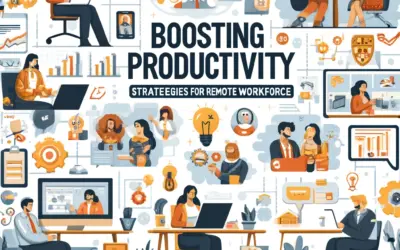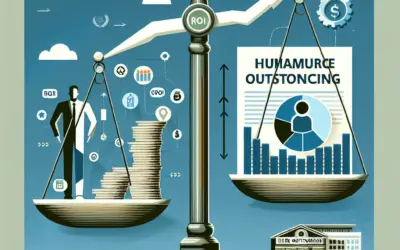Understanding the Basics of Behavioral Interviews and Their Importance
Behavioral interviews are a key component in the hiring process, vastly differing from traditional interview methods. The core of behavioral interviewing is the belief that past behavior is the best predictor of future performance in similar situations. By exploring how a candidate acted in past situations, employers gain insights into a candidate’s ability to handle future challenges.
What is a Behavioral Interview?
At its core, a behavioral interview focuses on experiences, behaviors, knowledge, skills, and abilities that are job related. It is structured to coax from the interviewee concrete examples of past behavior that demonstrate particular competencies necessary for the position. Rather than asking how candidates would behave, it probes how they did in fact behave in the past.
Structure of a Behavioral Interview
A typical behavioral interview is structured around open-ended questions that require reflection and detail. Questions often start with phrases like «Tell me about a time when…» or «Give me an example of…,» pushing candidates to narrate specific instances rather than speak in generalities. The STAR method (Situation, Task, Action, Result) is often used by candidates to structure their responses in a comprehensive and coherent manner.
Why Are Behavioral Interviews So Important?
The importance of behavioral interviews lies in their effectiveness. By focusing on real-life examples, employers can better predict how a candidate will perform on the job. This technique provides a deeper understanding of the candidate’s professional demeanor, ethical compass, and problem-solving skills. It’s a tool designed to select candidates whose past behaviors align closely with the desired competencies of a new role.
Key Principles in Designing Effective Behavioral Assessments
Before creating an assessment, it is essential to clearly understand the desired outcome. An effective behavioral assessment is designed with a clear objective in mind, whether it’s to determine the competency of a job candidate, to guide training programs, or to measure the psychological traits of individuals. Pinpoint precisely what behaviors or competencies the assessment seeks to evaluate and ensure each part of the test aligns with this goal.
Knowing your audience is equally important. Consider the characteristics of individuals who will engage with the assessment. Factors such as age, education level, and cultural background can significantly influence how participants interpret and respond to the test items. To make an assessment useful across diverse groups, it is vital to adopt a universal design approach, prioritizing accessibility and fairness for all test-takers.
Utilize Valid and Reliable Measurement Techniques
Rigorous scientific methods must underpin behavioral assessments to ensure they are both valid and reliable. Validity refers to whether the assessment accurately measures what it claims to measure. This requires thoughtful construction of questions and scenarios that tap into specific behaviors and mindsets. Meanwhile, reliability pertains to the consistency of results over time. An assessment should yield similar outcomes under consistent conditions, confirming its stability and precision.
To enhance validity and reliability, assessment designers often employ psychometric testing methodologies, such as factor analysis, to understand the underlying traits being measured. Moreover, piloting the assessment with a small, representative sample before full implementation can help identify any flaws or biases in the design.
Incorporate Ethical Standards and Considerations
Designing behavioral assessments necessitates an unwavering commitment to ethical standards. The privacy and dignity of participants must always be at the forefront; thus, designers should ensure confidentiality and obtain informed consent. It is essential to be transparent about the assessment’s purpose, how the data will be used, and the ways in which the results may affect participants.
Additionally, consider the potential for assessments to impact individuals negatively, such as inducing stress or anxiety. Efforts must be made to mitigate these effects by providing clear instructions, offering support, and ensuring the assessment environment is comfortable and distraction-free. The ethical use of data also extends to the appropriate storage, handling, and disposal of assessment results, safeguarding against unauthorized access and use.
Adapt Assessments to Changing Environments
The world is ever-changing, and assessments must keep pace. This means that behavioral assessments should not only be responsive to current needs but also adaptable for future requirements. The flexibility of assessments is vital, and incorporating feedback mechanisms can provide insights into their ongoing relevance and accuracy.
Regular reviews of assessments to align them with new scientific findings, cultural shifts, or organizational changes are a part of this adaptability. By understanding that behavior is context-dependent, designers can ensure assessments remain pertinent, engaging, and reflective of real-world situations.
Designing effective behavioral assessments is a task that hinges on a balance between scientific rigor, ethical practice, participant understanding, and adaptability. By grounding these principles in your assessment design process, you can ensure your tools accurately capture and reflect the complex tapestry of human behavior.
Best Practices for Conducting Insightful Behavioral Interviews
Understanding the Behavioral Interview Approach
Behavioral interviews are a popular method used by employers to assess a candidate’s past behavior as a predictor of future performance. The premise is simple: how a candidate acted in certain situations in the past will indicate how they will behave in the future. To ensure these interviews yield valuable insights, it’s crucial to begin with a clear understanding of the behavioral interview approach.
Always start with a well-defined job description. This will help you generate relevant questions that are directly linked to the necessary competencies for the position. When crafting these questions, frame them to push candidates to reflect on real instances rather than hypothetical situations. For example, «Tell me about a time you resolved a conflict with a coworker» rather than «How would you handle a conflict with a coworker?»
Creating a Comfortable Interview Environment
One of the critical aspects of achieving successful behavioral interviews is to ease candidates into a comfortable conversation. This comfort can encourage openness and authenticity in their responses. Begin the interview with a friendly demeanor and offer a simple explanation of the behavioral interview process. Avoid jumping straight into tough questions without first setting a friendly, professional tone.
Developing a List of Targeted Behavioral Questions
For the core of the behavioral interview, it’s essential to have a prepared list of targeted questions. Each question should be structured to reveal specific competencies such as teamwork, leadership, problem-solving, and time management. Use the STAR (Situation, Task, Action, Result) technique as a guide for your inquiry, prompting candidates to share comprehensive stories that showcase their skills.
Focusing on Diverse Scenarios
To get a well-rounded picture of a candidate’s experiences, include questions about various scenarios. These might range from dealing with success to navigating failure, or from working solo to being part of a team. The goal is to understand how the candidate adapts to different dynamics and how they learn from each experience. Be cautious of recency bias and encourage them to draw on a range of past experiences.
Effective Listening and Follow-Up Questions
Effective interviewing is as much about listening as it is about asking the right questions. Pay close attention to the candidate’s answers, and be ready to ask insightful follow-up questions. This can help dig deeper into the candidate’s behavior and decision-making processes. For instance, if a candidate discusses leading a project, ask about the specific strategies they used for team motivation or how they overcame particular obstacles.
Maintaining Objectivity in Assessment
To avoid bias and ensure a fair evaluation, maintain a consistent questioning approach for all interviewees. Using a scoring system where responses are judged against pre-determined criteria can help maintain objectivity. After the interview, review your notes thoroughly while the discussion is still fresh in your mind. This will assist in providing a fair assessment of each candidate’s potential fit for the role.
Remember, the most insightful behavioral interviews are those that not only uncover the past behaviors of candidates but also reveal their potential for growth and learning. By implementing these best practices, interviewers can enhance the effectiveness of the behavioral interview process, ensuring a more productive outcome for both the organization and its potential future employees.
Interpreting Responses: Analyzing Behavioral Cues for Better Hiring Decisions
Interpreting Verbal Responses: Clues Beyond Words
During job interviews, every word a candidate utters holds weight. But the secret to making better hiring decisions might lie beyond their verbal responses. The key to interpreting responses is in the subtleties of how something is said rather than just what is said. This involves noting the pace of speech, tone, and emotion. Rapid-fire answers may signal confidence or nervousness, while measured responses might demonstrate thoughtfulness or uncertainty. The tone can reveal enthusiasm or apathy. By closely listening and interpreting these verbal cues, employers can gain deep insights into a candidate’s personality and potential cultural fit.
Understanding Pause Patterns
Pauses can carry as much meaning as words in a conversation. A well-timed pause may indicate a candidate’s careful consideration of their answer, signaling a thoughtful and thorough approach to problem-solving. Conversely, frequent hesitations might suggest a lack of confidence or knowledge. The context of the pause, alongside the candidate’s body language, can provide a clearer interpretation of their communication style and adaptability under pressure.
Analyzing Non-Verbal Behavior: The Silent Signals
Mirroring And Gestures
Non-verbal behaviors often speak louder than words. For instance, a candidate’s mirroring of an interviewer’s posture can denote agreement and rapport, while pronounced gestures may emphasize points or betray anxiety. Recognizing these non-verbal cues requires an astute observer, aware that cultural differences can heavily influence body language. Therefore, it’s critical to consider the overall context and individual differences when analyzing these cues.
Deciphering Sociolinguistic Elements
Word Choice and Storytelling
The vocabulary a candidate chooses can unveil much about their interpersonal skills and professionalism. Articulate and clear responses suggest effective communication abilities, crucial for any role. Additionally, storytelling during an interview can be a powerful indicator of a candidate’s capability to engage, persuade, and maintain relationships. By weaving experiences into narratives, candidates demonstrate how they can relate these anecdotes to the job at hand, potentially revealing their suitability for the role.
Assessing Emotional Intelligence Through Response Analysis
Assessing a candidate’s emotional intelligence (EQ) can be as significant as evaluating their intellectual capabilities. EQ often manifests in the ability to read and react to social cues appropriately. During an interview, a high-EQ candidate might show empathy, manage stress effectively, and navigate the conversation with social grace. These skills are particularly important in team environments and leadership positions where relationship management is key. By analyzing responses, interviewers have the opportunity to gauge a candidate’s emotional capabilities, aiding in the selection of well-rounded team members who can contribute positively to the workplace dynamic.
Case Studies: Successful Applications of Behavioral Interview Strategies
Introduction to Behavioral Interviews
Behavioral interviews have become a cornerstone in the hiring process of many successful companies. By focusing on how candidates handled past situations, employers gain insights into their potential future performance. This article delves into several case studies that showcase the successful application of behavioral interview strategies, providing a roadmap for other organizations looking to refine their hiring processes.
The Impact of Behavioral Questions on Candidate Assessment
Behavioral questions are designed to explore various competencies, such as problem-solving, teamwork, and leadership. Understanding the impact these questions have on the assessment process is paramount. For example, a case study from a leading tech company revealed that candidates who gave specific examples of teamwork were 30% more likely to succeed in collaborative projects. These findings highlight the predictive power of behavioral interviews and their role in identifying the most capable candidates.
Structured Behavioral Interview Techniques
Structured interviews where each candidate is asked the same set of predetermined questions have shown to be particularly effective in leveling the playing field. In a case study from a multinational consumer goods firm, this method reduced unconscious bias and increased diversity in their new hires.
STAR Method in Behavioral Interviews
One successful strategy is the STAR method, which stands for Situation, Task, Action, and Result. Case studies from various industries show that when interviewers trained to probe for STAR responses, they were better equipped to assess candidate competencies reliably and consistently.
Real-World Success Stories of Behavioral Interviewing
Some of the most compelling evidence for the efficacy of behavioral interviews comes from real-world success stories. A case study involving a Fortune 500 company demonstrated a 20% increase in employee retention after they implemented a behavioral interview-based hiring model. Candidates hired through this process were a better fit for the company culture, leading to improved job satisfaction and longevity.
Behavioral Interviews in High-Turnover Sectors
In industries with high turnover rates, such as retail or hospitality, behavioral interviews have proven especially beneficial. By focusing on past behaviors indicative of resilience and adaptability, companies have reported a significant reduction in turnover. A prominent hotel chain saw a drop of 15% in turnover rates within a year of adopting behavioral interview techniques.
Best Practices for Conducting Behavioral Interviews
Though case studies affirm the value of behavioral interviews, their success hinges on proper implementation. Best practices include thorough interviewer training, crafting clear and relevant behavioral questions, and maintaining consistency throughout the interview process. Additionally, integrating these interviews into a broader evidence-based selection framework can further enhance their effectiveness.
Feedback and Continuous Improvement
Continuous improvement is vital for maintaining the efficacy of the interview process. In one tech industry case study, regular feedback sessions for interviewers led to a 25% improvement in the quality of hiring decisions over six months. This iterative approach ensures that the interview process evolves alongside organizational needs.
Using Technology to Enhance Behavioral Interviews
Technological tools can also assist in elevating the behavioral interview process. For instance, applicant tracking systems can help interviewers keep detailed records of candidate responses, aiding in more nuanced evaluations and decision-making.













0 comentarios